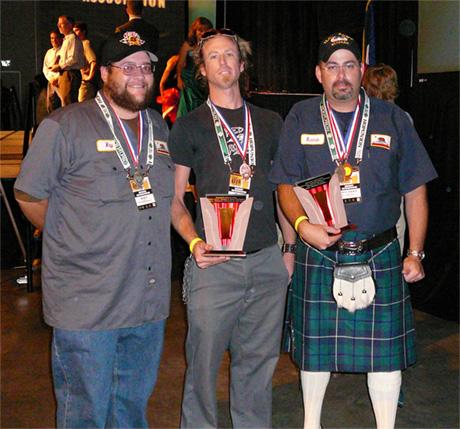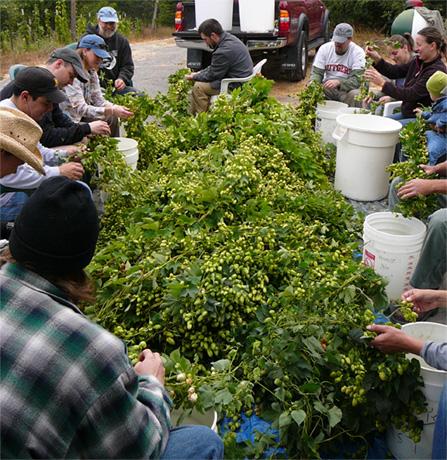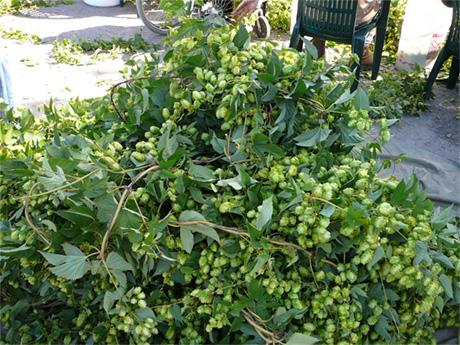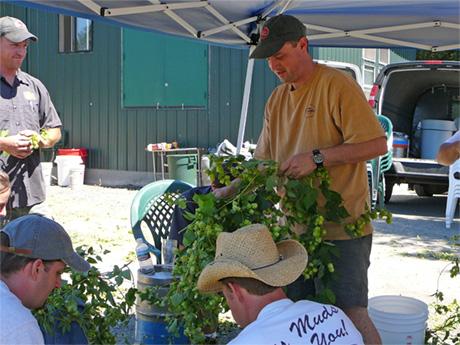The Sunday edition of the Philadelphia Inquirer ran a syndicated feature news service for daily newspapers called the Rand McNally Travel News. As near as I can tell, a division of Rand McNally produces travel pieces for a number of prominent newspapers, including the Chicago Tribune, the Dallas Morning News and others. With dwindling readership and severe under-staffing at many daily newspapers as most struggle to remain economically viable these days, they’re increasingly turning to syndicated content to supplement original staff-generated stories. It’s a bit of a self-fulfilling prophecy, in my opinion. As less and less people get their news from newspapers, they turn increasingly to AP, Reuters and other wire services, especially for their national and regional coverage, which has the effect of making them all look more and more the same. This homogenization loses them more readers which in turn causes them to layoff more staff and generate still less original content, which again causes a drop in readership.
Yesterday’s example of this cheap excuse for original content was by Mary Lu Laffey for the Rand McNally Travel News and the name of her monthly series is called “Hip Trip.” It’s apparently travel tips for younger people and presumably younger people with money since they would be the only ones who would plan their vacations. The “Hip Trip’s” tagline advice is simple. “Time and money may be in short supply for many younger travelers. Each month, Hip Trip brings you advice on how not to waste either.”
But whether by accident or design, her article is nothing short of an infomercial where in some cases she acts as a foil to corporate propaganda and at other times displays total ignorance for the subject at hand. It’s as if she took a press release, did no research or fact-checking, added a few sentences to personalize it and then added her byline. Of course, she appears to be writing in the first person as if she actually attended a beer dinner, but what we get is her impressions of the experience, what her host tells her and little else. There’s certainly no questions from Laffey as misinformation and laughable advice flows freely from Brent Wertz, chief executive chef at Kingsmill Resort. The Williamsburg, Virginia resort is, of course, an Anheuser-Busch company, a fact Laffey fails to disclose (or perhaps she’s not even aware of it). But it certainly makes what follows more understandable, if no less absurd. She undoubtedly had her beer dinner at the Eagles Restaurant, which lists three beer dinner menus on their website, one with Budweiser, one with Michelob Ultra Light and one with World Select.
So without further ado, let’s begin the show.
Laffey’s first few paragraphs are doozies, and they set an unquestioning tone that permeates the whole article. Here they are, in their entirety.
Brent Wertz doesn’t flinch as he twists open a bottle of ultra light, low-carb beer and pours it straight down the middle of a chardonnay glass. He tilts his head only slightly as he watches it splash big at the bottom. Wertz says the big splash is necessary to break the carbonation and to open the nose of the beer.
Stemmed glass? Nose? Beer?
That’s a big “yes” from Wertz, chief executive chef at Kingsmill Resort. He plans menus around beer, marinates and cooks with it, and passionately recommends beer whether you’re dining plain or fancy.
That’s a big “whoa” from me. In the bigger picture, does drinking beer with dinner mean I have to put keggers behind me?
Just out of curiosity, do many people “flinch” when opening a twist-off cap? Or is the pouring it into a chardonnay glass that should cause the twitch in her mind? Her next reaction — her quizzical “Stemmed glass? Nose? Beer?” aside — is becoming the standard neophyte knee-jerk in virtually every one of these type of pieces. Some ignorant journalist is shown beer in a different light for the first time (where were all these people living for the last 25 years, in a box? The Moon? Prison?) and their first reaction is always one of great surprise that someone might even be capable of taking beer seriously. Worldwide, people have been drinking beer from stemmed glassware for centuries. And did it never occur to anyone that at least the people making the beer would be smelling it, checking it’s “nose,” to insure they were making a consistent product? How out-of-touch with the real world and common sense do you have to be in order to be surprised that people might smell beer to gauge it’s quality? And finally there’s the kicker reaction, that it’s beer and that someone might think of it as more than cheap swill with no discernible flavors worth talking about. The pervasiveness today of this manufactured stereotype of beer as unworthy is frankly quite astonishing, especially from presumably educated journalists who one would assume would be paying a little more attention to the news than the average person that good craft beer has been around for over 25 years? How could anyone have completely missed that phenomenon to present actual shock when confronted with better beer? But here it is on display again, proving once again that the depths of ignorance in the press know no bounds.
When she gets her “big yes” from Kingsmill’s chef she responds with a “big whoa” and wonders whether she has to give up her apparently precious keggers, I feel like I’ve fallen into “Mary Lu’s Excellent Adventure” and I’m reading the term paper of a failing high school student. How bogus is that? Why she thinks that you can’t have fine beer with a meal and also enjoy beer from a keg in a totally different context is beyond my grasping. Perhaps she thinks there’s only one way to do anything, who knows? And the sentence seems to infer that this is the very first time she’s ever had a beer with dinner! How is that even possible?
Of course, I’m using the term “fine beer” here metaphorically since the only beers mentioned in the article by name are Michelob Ultra Light, Budweiser, and Michelob Amber Bock, not exactly “big” beers by any stretch of the imagination. But to our intrepid author, in her “90-minute sojourn into silver-placed settings on table linen, with stemmed glasses, haute cuisine – and beer” she does just that. She describes “swirling the contents of [her] burgundy glass” with its full-bodied Bud coat[ing] the sides of the glass” and imagined herself “talking about how the big flavor of this big beer exhaled deeper with each twirl.” Stop, stop, my sides are aching with laughter. Okay, no matter how much you love Budweiser it can’t reasonably be called “full-bodied.” Its flavor — if you can even call it that — is so light as to be almost non-existent. But to Mary Lu, this is “big beer” with “big flavor.” I wonder what she’d think of an Old Rasputin Imperial Stout? Or even Sierra Nevada Pale Ale?
For dessert, chef Wertz suggested that they needed “a lager big enough to stand up against chocolate” and gave them Michelob Amber Bock. I hope the double-fudge brownie torte they had for dessert wasn’t too chocolately, because that’s not a beer that can stand up to very much flavor and hold its own. She claims to have “found a rich, full lager that smelled a lot like coffee and caramel.” Uh-huh, that’s not my memory of this beer’s nose. And while I’m generally cautious about using the beer rating websites as a source, I think the Beer Advocate reviews of Michelob Amber Bock are pretty amusing and show a great disparity between the inexperienced beer drinker vs. the more experienced ones. Frankly, her description sounds like it came from a sale sheet provided by A-B.
But let’s turn now to her finale:
What a finale, I thought as I turned my attention to my double-fudge brownie torte. The dessert would put my taste buds to the test. Would they dare use beer in brownies? I bit into the brownie and tasted the caramel sauce that was hiding beneath it. I should have known that even a chef like Wertz would not mess with brownies.
That you’d have to “dare” to use beer in making brownies, implying more broadly that dessert really shouldn’t have beer it, once again demonstrates that we’re back to a high school mentality. Wow, what a revelation. I guess I’ll have to take back all the wonderful desserts I’ve enjoyed over the years made with beer in them. Because beer chef Bruce Paton, among many others, have made some amazing dishes using chocolate and beer. This spring he did an entire chocolate and beer dinner with Chimay and Scharffen Berger chocolate. And chef Eddie Blyden, when he was at 21st Amendment (he’s now at Magnolia), did a terrific multi-course meal in which every dish used both beer and chocolate, including the soup, salad and dessert with Cocoa Pete’s chocolate. And that’s just a small sampling in one city. All across the nation — and the world — people are and have for many years been cooking with beer, including desserts. Beer cook Lucy Saunders, for example, has two recipes for chocolate and beer dishes on her website. This is only news to the monumentally myopic and uninformed.
To be fair, her piece is aimed at young travelers, who apparently in the author’s mind would be as ignorant as she is, and there may be some element of truth to that. I’m no expert on youth culture. But with craft beer’s sales on the rise and a generation of young people turning 21 never having known a time when there wasn’t craft beer, such a position seems harder and harder to maintain. Come on, Rand McNally, why not get some writers who know about beer to write about beer. I double dare you.














